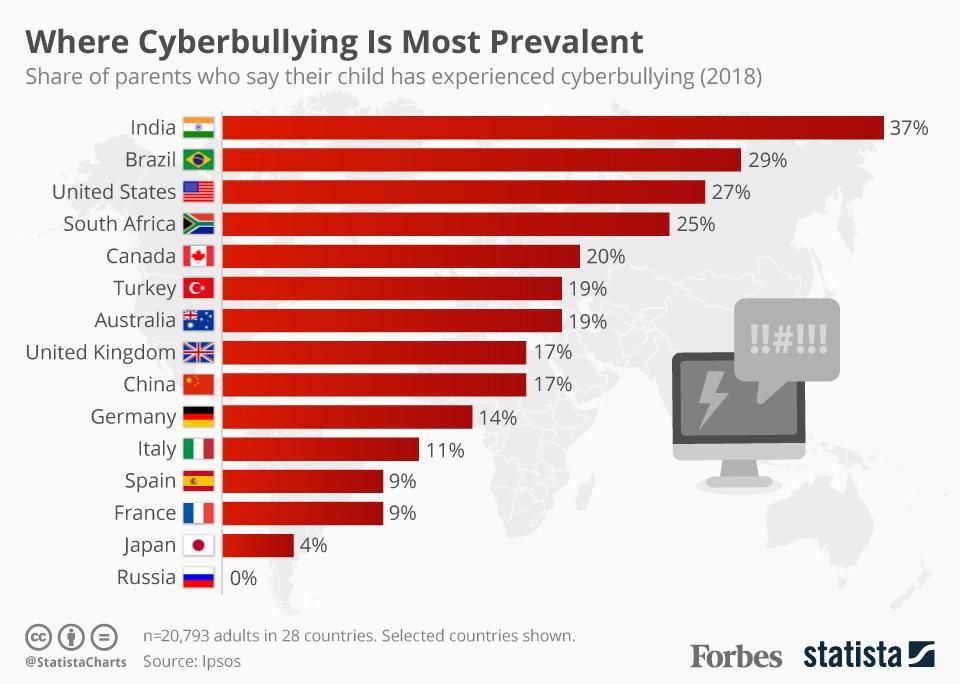Cyber Bullying In India
May 17, 2019 • 43 views
Bullying is to hurt or frighten someone, often over a period of time, and often forcing that person to do something they do not want to do. This behaviour is often repeated and is habitual. The most important factor in bullying is the perception of imbalance of physical or social power by both the bully and the victim. This imbalance is the difference between a conflict and bullying.

Bullying can be face-to-face or a person can bully another without any physical confrontation while bullying the person ie to bully a person via text, email or other social networking sites. This form of bullying is known as Cyberbullying. Cyberbullying includes sharing, posting or spreading harmful, false and/or mean content about any one person. This can be done by sharing personal or private information about a person that might lead to humiliation or embarrassment.
The most common places where cyberbullying occurs are:
Social Media, such as Facebook, Instagram, Snapchat, and Twitter
SMS (Short Message Service)
Instant Message (via devices, email provider services, apps, and social media)
Email
The 2015 School Crime Supplement (National Center for Education Statistics and Bureau of Justice Statistics) indicates that, nationwide, about 21% of students ages 12-18 experienced bullying. The 2017 Youth Risk Behavior Surveillance System (Centers for Disease Control and Prevention) indicates that an estimated 14.9% of high school students were electronically bullied in the 12 months prior to the survey.
A recent study by Ipsos, surveyed parents from 28 countries to understand the statistics of cyberbullying. It was relieved that India has the highest rate of cyberbullying with 37% of the parents saying their child has experienced cyberbullying.

Cyberbullying has unique concerns like:
·Persistent: Digital devices offer the ability to be in touch with another person 24/7 giving no time for the victim to find relief.
·Permanent: The content posted or shared on digital platforms are permanent unless the post is reported and removed.
·Harder to notice: As the bullying does not take place physically it is harder for teachers, parents or friends to notice the situation.
Crime Branch of Cyber Crime:
Cyber crime/bullying/harassment does not have any jurisdiction and the victim can file a case in any police station. If there is no cyber crime centre in the locality, the victim can file a FIR in a local police station. They are bound to file the FIR. Offences such as insult, defamation, humiliation, bullying were a punishable offence only in the IPC till an amendment to the Information Technology Act of 2008. Section 66A deals with these crimes. Sending a message through a computer any other device for communication, that the person knows to be false/fake, is horrendously offensive or has an intention to cause harm, insult embarrassment or to destroy another person’s character is considered an offence in this section. This crime under the current IT laws in India is punishable by three years and a fine.

